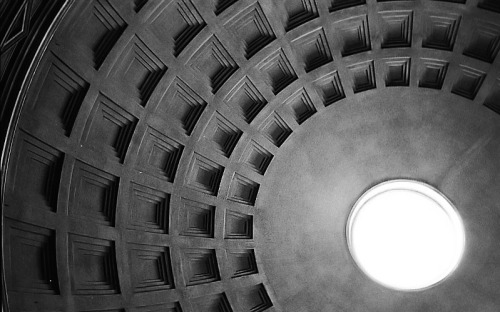More Posts from Novato-curioso-blog and Others

This dance is to the death. Along the way, as these two large galaxies duel, a cosmic bridge of stars, gas, and dust currently stretches over 75,000 light-years and joins them. The bridge itself is strong evidence that these two immense star systems have passed close to each other and experienced violent tides induced by mutual gravity. As further evidence, the face-on spiral galaxy on the right, also known as NGC 3808A, exhibits many young blue star clusters produced in a burst of star formation. The twisted edge-on spiral on the left (NGC 3808B) seems to be wrapped in the material bridging the galaxies and surrounded by a curious polar ring. Together, the system is known as Arp 87 and morphologically classified, technically, as peculiar. While such interactions are drawn out over billions of years, repeated close passages should ultimately result in the death of one galaxy in the sense that only one galaxy will eventually result. Although this scenario does look peculiar, galactic mergers are thought to be common, with Arp 87 representing a stage in this inevitable process. The Arp 87 pair are about 300 million light-years distant toward the constellation Leo. The prominent edge-on spiral at the far left appears to be a more distant background galaxy and not involved in the on-going merger.
Object Names: Arp 87
Image Type: Astronomical
Credit: NASA, ESA, HST
Time And Space
Maravilloso!!! El cálculo de la raíz cuadrada de 2 al estilo babilonio, cómo ven? Y el resultado es: 1.414213

Babylonian tablet illustrating a square and working out the square root of 2. Second millennium BCE.
Un hermoso castillo en Molina, data del s. XVII con remodelaciones en el XIX y XX. Quien lo reconstruyó como el original, se quemó parcialmente en 1896, fué Hubert von Tiele-Winckler hijo.

Moszna Castle, Poland
He de volar en globo!!!

by Manu Hansen ( tumblr )
La maravillosa construcción romana. No deja de sorprenderme y maravillarme.


The Pantheon in Rome | 2nd Century AD

Boundless by Sapna Reddy Photography
Yosemite, California

One of the brightest galaxies in planet Earth’s sky is similar in size to our Milky Way Galaxy: big, beautiful M81. The grand spiral galaxy can be found toward the northern constellation of the Great Bear (Ursa Major). This superbly detailed image reveals M81’s bright yellow nucleus, blue spiral arms, tell tale pinkish star forming regions, and sweeping cosmic dust lanes with a scale comparable to the Milky Way. Hinting at a disorderly past, a remarkable dust lane actually runs straight through the disk, to the left of the galactic center, contrary to M81’s other prominent spiral features. The errant dust lane may be the lingering result of a close encounter between between M81 and its smaller companion galaxy, M82. Scrutiny of variable stars in M81 has yielded one of the best determined distances for an external galaxy – 11.8 million light-years. M81’s dwarf companion galaxy Holmberg IX can be seen just above the large spiral.
Object Names: M81
Image Type: Astronomical
Credit: Ken Crawford (Rancho Del Sol Observatory)
Time And Space
Maravilloso!!!

Sculpted by stellar winds and radiation, the star factory known as Messier 17 lies some 5,500 light-years away in the nebula-rich constellation Sagittarius. At that distance, this 1/3 degree wide field of view spans over 30 light-years. The sharp composite, color image, highlights faint details of the region’s gas and dust clouds against a backdrop of central Milky Way stars. Stellar winds and energetic light from hot, massive stars formed from M17 stock of cosmic gas and dust have slowly carved away at the remaining interstellar material producing the cavernous appearance and undulating shapes. M17 is also known as the Omega Nebula or the Swan Nebula.
Object Names: Omega Nebula/ Swan Nebula/ M17
Image Type: Astronomical
Credit: ESO/ MPIA/ OAC
Asembly: R. Colombari
Time And Space
La arquitectura fundida con el arte se convierte en una obra de enseñanza histórica. En ellas podemos leer los sucesos de los grandes éxitos militares de la época.





Reliefs on the column of Marcus Aurelius | 2nd Century AD
via #NASA_APP
-
 worthsertaimutan liked this · 1 year ago
worthsertaimutan liked this · 1 year ago -
 novato-curioso-blog reblogged this · 8 years ago
novato-curioso-blog reblogged this · 8 years ago